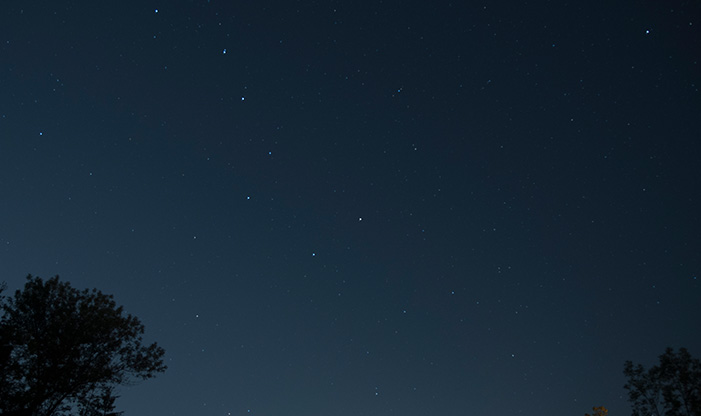For centuries, people have looked to the sky for its beauty, wonder, and even inspiration. This fall, the autumnal skies will showcase several prominent meteor showers and one solar eclipse that will have many observers captivated.
Fall Annular Solar Eclipse
An annular solar eclipse will take place on Saturday, October 14. A solar eclipse occurs when the new moon passes between the earth and the sun. The full lunar cycle lasts 29.5 days—the period between two new moons. During this time, there are eight recognized phases, the first being the new moon, which isn’t visible in the daytime due to the intensity of the sun.
On rare occasions, when the path of the new moon passes exactly in the plane between earth and sun, an eclipse of the sun occurs. The October event is an annular eclipse—rather than total—because the moon will not completely cover up the sun. This is due to the moon’s distance from earth: the orbit of the moon is not a perfect circle and varies from 225,000 to 252,000 miles away.
In our area, we can expect 40% maximum sun coverage during this event, which begins at 10:37 am, peaks at 11:56 am, and concludes at 1:20 pm. The sun will still be far too bright for us to look at directly, which is never safe to do. It’s best to view this and any eclipse with the aid of trained sky observers with proper equipment. The most sun coverage will occur in areas of the southwestern U.S. and parts of Mexico, where nearly 100% obscuration happens. Impressively, there will still be a visible “Ring of Fire” around the sun at those locations —a dazzling sight.
Fall Meteor Showers
There are also several prominent meteor showers this fall. Meteors, sometimes called “shooting stars,” are tiny bits of cosmic dust and debris that enter the Earth’s atmosphere at very high rates of speed. Most meteors range in size from a pebble down to a grain of sand—hardly a star at all! When they travel in space, we call them meteoroids; while burning up in the atmosphere they are meteors, and if they reach the ground, they are termed meteorites.
Meteors can be random or periodic (predictable). Periodic meteor showers typically originate from comets that orbit the sun, just as the earth does. Comet tails leave debris in the path behind them, which the earth then moves through in the course of its year-long journey.
The Orionid meteor shower will peak October 21-22. We can expect about 20 meteors per hour if the skies are clear — best seen far from city lights. The Leonids meteor shower will peak at 10 – 15 per hour on November 17-18. These events get their names because they appear to originate from a particular location in the night sky—in these cases, the constellations Orion the Hunter and Leo the Lion.
The best display will occur December 13-15: the Geminids. These have a radiant from Gemini the Twins and are predicted to number an impressive 130 – 140 per hour! Visibility will be aided, since it coincides with the new moon of December 12. Interestingly, this shower is associated not with a comet, but with an asteroid named Phaethon, which is larger and made of rock.
Enjoy this delightful symphony of the sky and happy star gazing!


